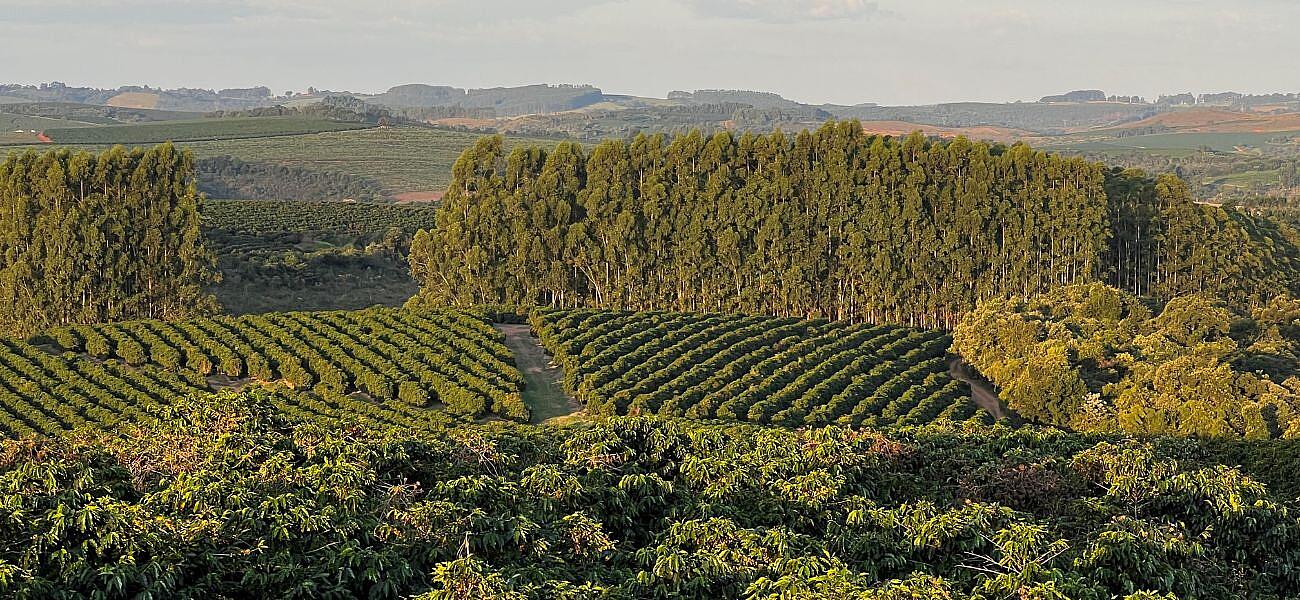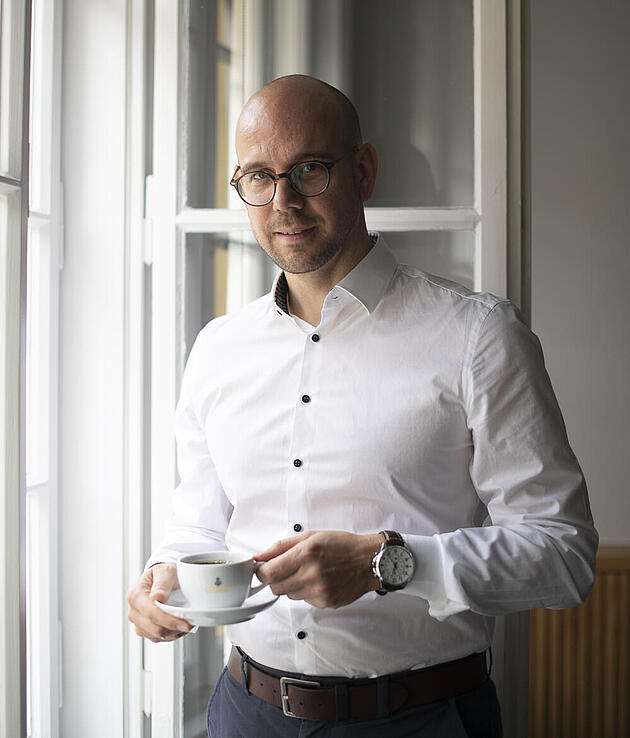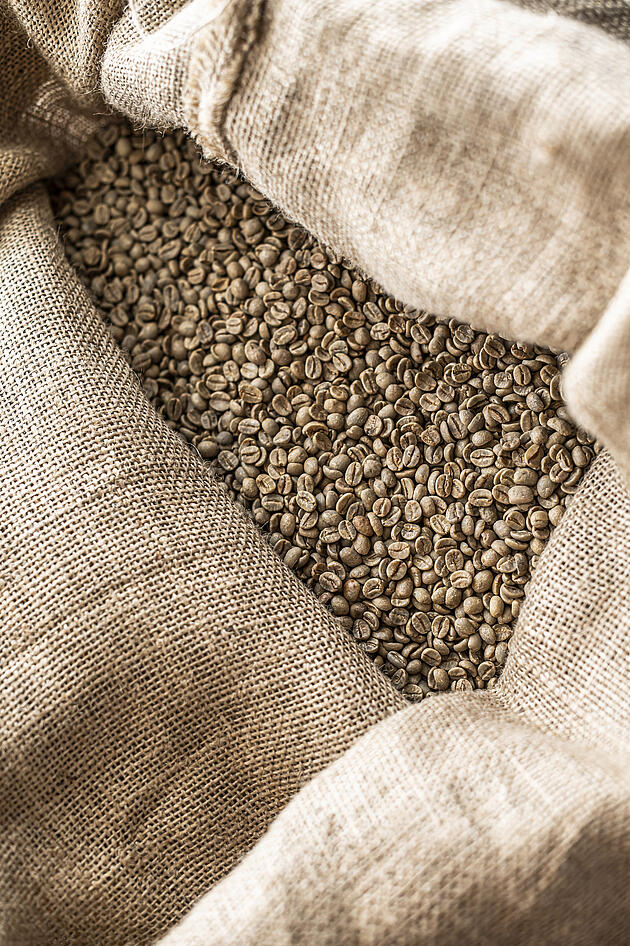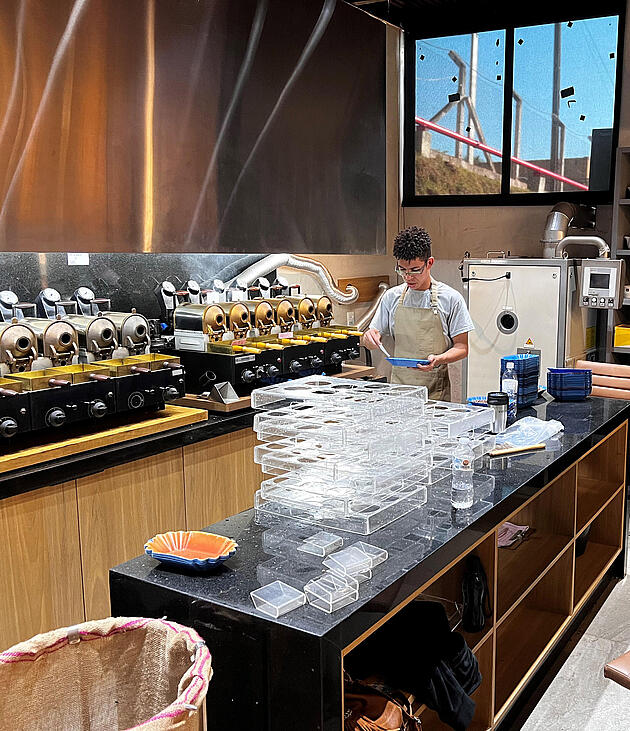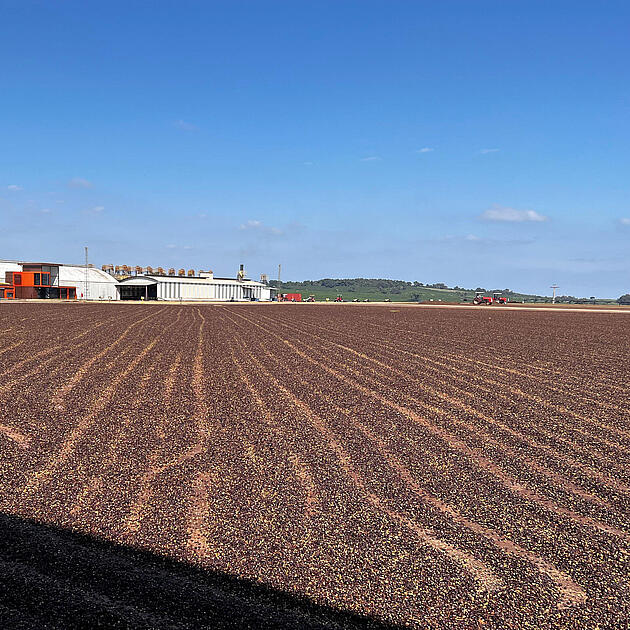Coffee is much more than a gourmet product. It reflects social developments, weather phenomena and culinary trends. Till Robert sees this in his job: as Head of Green Coffee Purchasing, he is responsible for choosing which countries Dallmayr coffee beans come from. This involves him travelling regularly to the countries of origin – also to maintain contact with the producers. In this interview, he explains the importance of being physically present in the coffee-growing regions, what is special about the green coffee trade, the significance of Brazil for Dallmayr and how state-of-the-art technology can also address threats to the climate.
Till, your job sounds a little out of the ordinary. As Head of Green Coffee Purchasing, you are responsible for which coffee ends up in the cup at Dallmayr. Can you briefly explain what qualifications you need for the job?
I’ve been involved with coffee for 24 years and have never worked with anything else during my whole career. I learned the business more or less from the ground up at the Gebrüder Westhoff coffee roaster in Bremen, Germany. A career like mine typically begins with a commercial apprenticeship at a coffee manufacturer or green coffee trading company. It’s important to spend a lot of time in the relevant quality department, as that’s where you learn an incredible amount about coffee as a product.
What do you like about your job and the green coffee industry?
Coffee is a natural product and is therefore incredibly versatile. It is grown in more than 50 countries around the world, and each individual country of origin has its own huge range of different coffees. Finding those extra-special beans among this vast array of options, and combining them to make a really good coffee, involves a lot of skill and creativity. What I also really appreciate about the green coffee industry is the interaction with other people. The qualifications for the job are quite special. There aren’t that many of us, so we all know each other. The green coffee trade is Hanseatic in nature; for us it’s the handshake that counts. That means my job also has a lot to do with appreciation and respect.
One of your last trips to a coffee-growing country took you to Brazil. How would you describe the coffee there?
We can’t really speak of THE typical Brazilian coffee. The country has a broad range of coffee profiles – from mainstream to truly top-class coffees that win the Cup of Excellence (a competition in the speciality coffee segment for the best beans in a particular country). Brazil is the largest country of origin in terms of coffee volume, but perhaps not the most diverse when it comes to flavour. One of the reasons for this is altitude. The higher the coffee grows, the slower it grows. And the slower it grows, the more time there is for flavours and aromas to develop. At lower altitudes, such as in Brazil, this process takes place more quickly, resulting in coffees with less spiciness. Brazilian coffees are instead characterised by their mild character and good body. These are particularly good for making espresso and café crème specialities.
What role does Brazil play for Dallmayr?
Our most important coffee-growing countries are Brazil, Ethiopia and Vietnam – with Brazil leading in terms of volume. That’s why it’s essential to have good local partners. Both on the retail side and at the source with the producers. Taking a trip like this is also a show of appreciation and recognition regarding the important work that our partners do at the origin. Being present in Brazil allows us to further establish and maintain personal contacts. After all, coffee is a people business!
What is the best time to travel to a coffee-growing region?
I try to choose a time when I can see a lot, ideally during the harvest. Coffee looks great at other times of the year, as well – when it’s in bloom, for example. But more than anything else, I want to taste the new harvest and check the quality. I then arrange visits depending on when the producers and exporters I want to meet are available. The beans for our speciality coffees generally come from smaller producers and groups of producers. We cannot purchase the large quantities we need from individual producers, so we obtain most of those coffees via trading houses.
What does a typical day at the origin look like?
When taking a trip, it’s usually together with a small group of roasters and traders. Local exporters and/or producers introduce their teams and we discuss the latest business, market developments and the general weather situation. After these meetings, there’s usually a tasting session where we can try the different coffees. Then, we visit the coffee farm or take a look at a storehouse. Usually, there are two or three of these meetings each day, so you don’t get back to your hotel until late in the evening. There’s hardly any chance to relax during a two-week visit, but the valuable contacts and numerous impressions make it worthwhile, and that’s why I always look forward to it.
What insights do you hope to gain on your travels?
As a rule, I try to ask all the producers and farmers the same questions to get a feel for the general mood and the topics that are relevant to them. The answers help me understand how exporters and producers see themselves in the face of global competition. I also want to see for myself whether the people can earn money from growing and trading coffee. This is quite easy to see when travelling in coffee-growing regions: a good infrastructure or new businesses are good indicators that the local population is doing well. That’s a very relevant factor for us.
Is the climate an issue that concerns you in general?
Absolutely. Climate is always a topic. Weather phenomena such as frost and drought will occur more frequently – with serious consequences. In Brazil, for example, we have to assume that climate change will limit the opportunities to grow even larger amounts of coffee. Interestingly, coffee-growing regions have already become smaller over the last 20 years, but the Brazilians are still producing much more coffee than before. This is down to investments in farmers that allow them to grow coffee more efficiently. Local management has improved enormously.
In what way? What has improved in Brazil?
What really surprised me on the larger plantations was the use of state-of-the-art technology. That really stood out! In Ethiopia, for example, coffee is still farmed in the same way it was a hundred years ago. In Brazil, on the other hand, drones take photos and map out the entire plantation. That way, the owner knows exactly where each tree is located. Tests are carried out on the various rows of trees to check quality. In some cases, sensors constantly measure the characteristics of the soil and continuously send information about whether a bush needs fertiliser or water, which is then delivered by autonomous vehicles. And just as much water as necessary – it isn’t just a blanket approach. That is, of course, incredibly efficient.
Can other coffee-growing countries keep up?
Brazil is the world’s largest producer of green coffee, and its share is increasing as many other coffee-growing countries can no longer keep up. I don’t mean that everywhere has to be exactly the same as Brazil. Every country has its very own topography and, as a result, different conditions. But I’m concerned that other countries are being left behind in the global market. This is making things more centralised, with a focus on larger countries such as Brazil and Vietnam. The result is a negative impact on the very diversity that makes coffee so exciting. Other countries, and even coffee roasters, could benefit enormously from looking into cutting-edge technologies like Brazil has done.
The interview was conducted by Sonja Pham - she is a freelance journalist and deputy editor-in-chief of Grafikmagazin. The fact that she previously worked in the catering industry for many years is reflected in her pronounced passion for coffee, cuisine and culinary delights.
